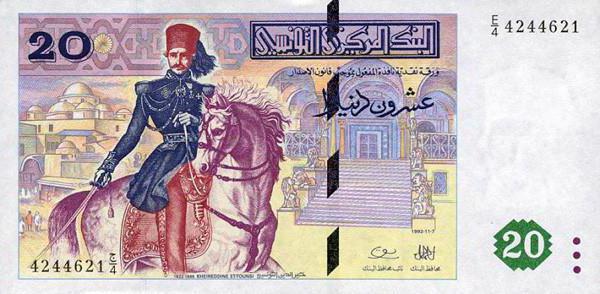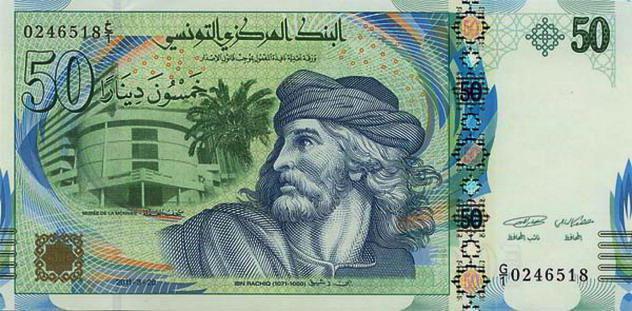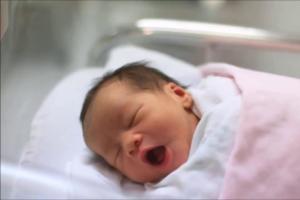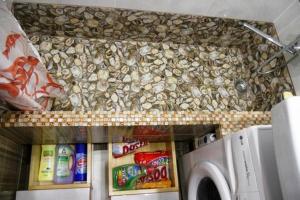Tunisian dinar is the national state currency of this state. Money was put into circulation in 1960 by Habib Bourguib, the first president of the country. The national currency appeared 3 years later, when the country gained its independence. Until that moment, Tunisia was a French colony, and there was a franc in everyday life.
Banknotes and notes of Tunisia
The Tunisian dinar in paper form is very beautiful. Banknotes are printed in bright colors, and on front side of notes portraits of national figures are depicted. Tunisian banknotes are often found excessively worn. But the National Bank does not withdraw old bills from circulation.
The production of the national currency is very expensive for Tunisia, so local residents have taught children how to handle money with care from childhood. A lot of coins and notes were produced in the country. The Tunisian dinar is indicated by two characters. One is for white papers and financial institutions - TND. The second is used on store tags - DT (“Dinar Tunisian”).
Coins in 1 dinar have several varieties. One of them depicts the princess who founded Carthage and the emblem of Tunisia. On the other you can see the first president Habib Bourguib and the outline of the state.
Denominations
Tunisian dinar is denoted by the letters DT. In one banknote - 1000 millimeters. There are 4 types of paper banknotes: from 5 to 30 dinars. Coins have 8 denominations: from 5 millimeters to 5 dinars. An advantage of 1 millimeter almost does not come across, they are now very rare and become almost collectible. Merchants for one such coin are ready to offer goods worth much more than 1 millimeter. Banknotes of the same denomination can vary greatly in color and size.
Currency exchange
In 2002, the Tunisian dinar to the dollar was $ 1.438: 1. The exchange rate is the same at all points, even at the airport. Tunisian dinars change any hard currency in all hotels and banks. At the same time, a receipt is issued, which becomes an official document for the reverse exchange. When departing from Tunisia, you need to exchange the local currency for a foreign one, but a deal can be made only from 10 dinars.
Currency Features
Tunisia has a ban on the export of state currency. For the remaining dinars, you can get dollars, francs, etc. But this can only be done if there is a primary exchange receipt and the final transaction is made only at the airport. Criminal liability is provided for the export of state currency from the country.
Such strict rules apply because Tunisia has a very expensive issue of dinars. It is forbidden to circulate foreign money. In the everyday life of the country only state dinars and millimes. In any exchanger you can find out the exchange rate of the Tunisian dinar to other currencies and make a deal. Since nowhere are dollars and euros accepted, but only Tunisian dinars.
When shopping, everyone has to be very careful: both tourists and locals. Banknotes, despite the same denomination, can have different images and differ in the year of issue. Because of the color scheme, you can easily confuse the merits of banknotes, so in Tunisia the most popular coins.








